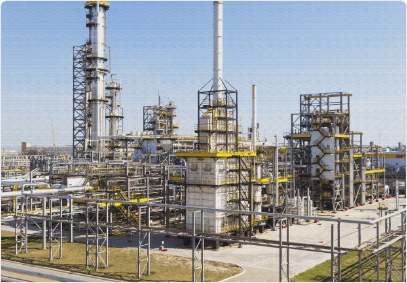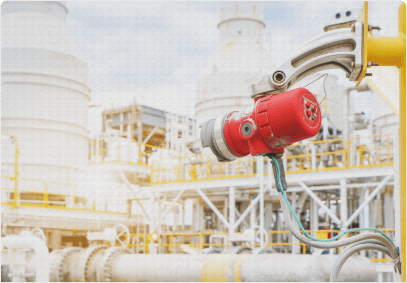The Roar Solutions Ideas
The Roar Solutions Ideas
Blog Article
The Definitive Guide for Roar Solutions
Table of ContentsLittle Known Questions About Roar Solutions.10 Easy Facts About Roar Solutions ExplainedRoar Solutions - An Overview
In order to secure installments from a potential surge a technique of analysing and classifying a possibly hazardous area is needed. The objective of this is to ensure the right choice and setup of devices to inevitably stop an explosion and to make sure security of life.
(https://www.artstation.com/roarsolutions6/profile)
No devices ought to be installed where the surface temperature of the devices is above the ignition temperature of the offered danger. Below are some common dust unsafe and their minimum ignition temperature. Coal Dirt 380C 225C Polythene 420C (melts) Methyl Cellulose 420C 320C Starch 460C 435C Flour 490C 340C Sugar 490C 460C Grain Dust 510C 300C Phenolic Resin 530C > 450C Aluminium 590C > 450C PVC 700C > 450C Residue 810C 570C The likelihood of the risk being present in a focus high sufficient to create an ignition will certainly vary from location to place.
In order to identify this risk a setup is divided right into locations of danger relying on the amount of time the dangerous exists. These locations are described as Zones. For gases and vapours and dirts and fibers there are 3 areas. Area 0 Zone 20 A dangerous environment is highly likely to be existing and might be present for lengthy durations of time (> 1000 hours per year) or perhaps constantly Zone 1 Area 21 A dangerous atmosphere is possible however not likely to be existing for long periods of time (> 10 450 C [842 F] A category of T6 implies the minimal ignition temperature is > 85 C [185 F] Dangerous area electric equipment perhaps made for use in greater ambient temperatures. This would showed on the score plate e.g. EExe II C T3 Ta + 60C( This indicates at 60C ambient T3 will not be exceeded) T1 T1, T2, T3, T4, T5, T6 T2 T2, T3, T4, T5, T6 T3 T3, T4, T5, T6 T4 T4, T5, T6 T5 T5, T6 T6 T6 A T Class rating of T1 means the maximum surface temperature level produced by the instrument at 40 C is 450 C. Thinking the associated T Class and Temperature rating for the devices are appropriate for the area, you can always utilize an instrument with a more rigorous Division ranking than needed for the location. There isn't a clear response to this question sadly. It truly does depend on the type of devices and what repair work need to be executed. Equipment with certain examination treatments that can't be done in the field in order to achieve/maintain 3rd event score. Should come back to the factory if it is prior to the devices's solution. Area Repair Service By Authorised Personnel: Challenging screening might not be needed nonetheless details procedures may require to be complied with in order for the equipment to maintain its 3rd party score. Authorized workers should be utilized to perform the work correctly Fixing have to be a like for like replacement. New component must be taken into consideration as a direct substitute needing no special screening of the tools after the repair service is full. Each item of devices with a hazardous score must be evaluated individually. These are described at a high level listed below, yet for more detailed details, please refer directly to the standards.
About Roar Solutions
The devices register is a comprehensive data source of tools records that consists of a minimum set of fields to recognize each product's location, technical parameters, Ex category, age, and ecological data. This info is critical for monitoring and managing the equipment properly within unsafe areas. In comparison, for periodic or RBI tasting assessments, the quality will certainly be a combination of Thorough and Close examinations. The proportion of Detailed to Close evaluations will be identified by the Tools Threat, which is analyzed based upon ignition risk (the likelihood of a source of ignition versus the chance of a flammable environment )and the harmful area classification
( Area 0, 1, or 2). This variant will certainly additionally influence the resourcing requirements for work preparation. As soon as Great deals are specified, you can develop tasting plans based on the sample size of each Whole lot, which refers to the number of random equipment things to be evaluated. To determine the needed sample dimension, two facets need to be reviewed: the size of the Whole lot and the group of evaluation, which suggests the level of effort that must be used( decreased, regular, or boosted )to the inspection of the Great deal. By incorporating the category of assessment with the Lot dimension, you can after that develop the proper being rejected standards for an example, indicating the allowable number of damaged products discovered within that sample. For more information on this procedure, please refer to the Power Institute Guidelines. The IEC 60079 standard advises that the optimum period in between evaluations must not surpass 3 years. EEHA assessments will certainly additionally be performed outside of RBI campaigns as part of arranged maintenance and equipment overhauls or fixings. These inspections can be credited towards the RBI example dimensions within the impacted Whole lots. EEHA examinations browse this site are conducted to identify faults in electric tools. A weighted scoring system is crucial, as a single piece of tools may have numerous faults, each with differing levels of ignition danger. If the combined rating of both examinations is much less than twice the fault score, the Lot is deemed appropriate. If the Great deal is still considered inappropriate, it has to undertake a complete inspection or justification, which might activate more stringent inspection procedures. Accepted Lot: The root causes of any type of mistakes are recognized. If a common failing setting is located, added devices might require maintenance. Mistakes are classified by intensity( Safety and security, Integrity, Home cleaning ), making sure that immediate issues are evaluated and dealt with immediately to minimize any kind of effect on safety or operations. The EEHA database should track and tape-record the lifecycle of faults in addition to the restorative activities taken. Executing a durable Risk-Based Examination( RBI )technique is critical for making certain compliance and security in taking care of Electrical Devices in Hazardous Areas( EEHA) (Roar Solutions). Automated Fault Rating and Lifecycle Administration: Easily take care of mistakes and track their lifecycle to boost inspection accuracy. The intro of this assistance for risk-based inspection better strengthens Inspectivity's position as a best-in-class remedy for regulative compliance, as well as for any kind of asset-centric examination usage case. If you are interested in learning extra, we welcome you to request a demonstration and discover just how our solution can transform your EEHA administration processes.
Roar Solutions - An Overview

In regards to eruptive threat, a dangerous area is an atmosphere in which an eruptive ambience is existing (or may be anticipated to be present) in amounts that need special safety measures for the construction, installation and use devices. eeha. In this write-up we check out the difficulties encountered in the work environment, the risk control steps, and the needed expertises to function securely
These compounds can, in specific problems, develop eruptive environments and these can have major and heartbreaking repercussions. Most of us are familiar with the fire triangular get rid of any one of the three elements and the fire can not occur, yet what does this mean in the context of unsafe locations?
In a lot of circumstances, we can do little regarding the levels of oxygen airborne, however we can have considerable impact on resources of ignition, for instance electric tools. Hazardous locations are documented on the dangerous location category drawing and are identified on-site by the triangular "EX" indication. Here, among other vital information, zones are divided into 3 kinds depending upon the threat, the chance and period that an eruptive ambience will certainly exist; Area 0 or 20 is regarded one of the most dangerous and Zone 2 or 22 is considered the least.
Report this page